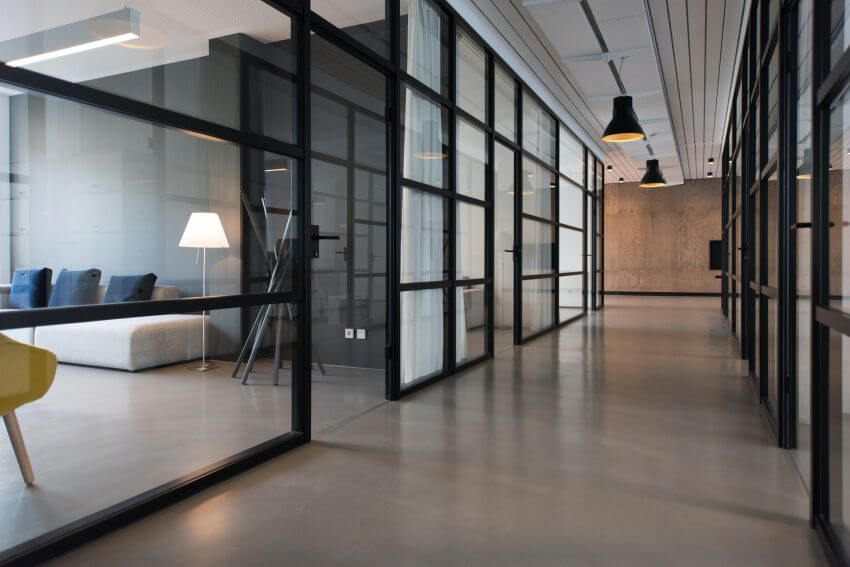The COVID-19 pandemic has shifted our reality, including people’s faith in the places where they work. Today, many organizations are evaluating space planning and reassessing the need for traditional office space, as employees working from home during the coronavirus pandemic was a resounding success.
It has been a challenging time for designers, developers, office tenants, and building managers. As a result, experts suspect that our fundamental perspective on life will never be the same as it was before COVID-19. We’re at a point where we not only need to redesign workplaces to be more productive, but also safer for people to work in.
Designing An Office Space Workers Can Trust
The key to creating a workplace where people feel comfortable and productive is to create environments that are safe. Such environments should prioritize health and wellness. These plans must be implemented from the top down, as many will be looking to the corporate leaders for direction. They should be established through thoughtfulness and compassion, especially after what everyone has been through over the past months.
We must keep in mind that each employee’s experience during the COVID-19 pandemic has been different. Not only should an individual’s role in the organization be thought of when designing a new work environment, but their home and family situation as well.
In the near future, it will likely become commonplace for employees to concentrate most of their in-person office work around activities that require collaboration while performing most if not all of their “heads down” desk work from home. With this sort of workplace model, the focus will be taken away from individual workstations and more emphasis placed on space for team collaboration and company gatherings.
While there is no one-size-fits-all model for space planning, there are several considerations that may prove effective.
1. Define Your Space Planning Goals
It’s a given that the safety and wellbeing of employees should always be an employer’s first concern. However, the COVID-19 pandemic has brought an entirely new perspective on workplace safety. In order to keep employees sheltered in a post-pandemic world, it’s time to rethink seating arrangements. This might mean increasing the distance between workstations.
These changes may entail switching to unassigned seating so employees have an opportunity to choose where they work. Sanitation protocols should also be set in place to increase safety. Of course, it may be a good idea to offer employees the continued flexibility of working remotely from home if they feel the need, or hybridize a work week so that employees feel comfortable. One should also be more strategic about aligning available space with what is actually needed to minimize real estate costs.
2. Recategorize the Aspects Of Your Space
Reexamine your entire square footage and evaluate the space that will be devoted to workstations, meeting spaces, and private offices. Assess and repurpose spaces that were underutilized before the pandemic. Consider the personal offices or large meeting rooms that were rarely put to use — those spaces could be converted into smaller meeting rooms or workstations for multiple employees. Lastly, to keep employees from congregating in large groups, it may be a good idea to move desks into open-air common areas.
3. Know the Needs of Your Employees
Rather than designing your workspace on the total number of employees, it’s a better idea to consider the percentage of your workforce that will regularly be on site. Basing your design on the total number of employees will result in you having too much excess space. It’s a good idea to start having this conversation with your employees and department heads.
4. Reevaluate Conference Room Requirements
While it might be too soon to predict exactly how the COVID-19 crisis will have affected the utilization of conference rooms, it’s likely your needs will vary every day. . Even though you may not have that many employees on-site as you once did, it’s highly likely that when remote employees do come to the workplace, they will be eager to collaborate with their teammates.
With many employees so accustomed to conducting meetings remotely, there will be an adjustment period for in-person meetings. Booking rooms for meetings aren’t as easy as creating and sending Zoom meeting links. Things to consider are capping in-person meetings at a “maximum occupancy,” as well as limiting the number of meetings that can be held in a week. This could be done by using room scheduling panels that display the maximum room occupancy.
5. Implement Biophilic Design Elements
One of the best ways to make a work environment healthier is by incorporating biophilic design elements such as plants. Adding elements of nature to the workplace is called “biophilia.” Supporters of biophilia claim that workplace designs featuring biophilia mimicking natural systems tend to decrease work-related stress, hasten recovery of bad health, and enhance creativity. This can benefit an organization by reducing the number of sick days employees take.
Another way to improve connectivity between people and the workplace is by increasing outdoor space for working. This can be achieved by adding decks to roofs or even outdoor terraces. In a post-COVID-19 world, employers have even more reason to invest in outdoor workspaces.

